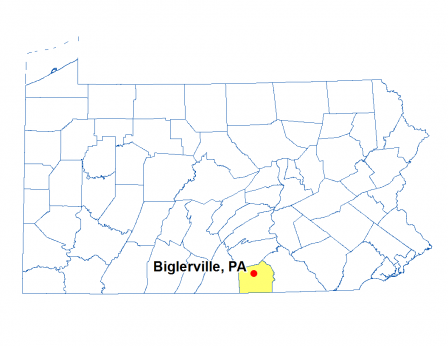Stories of Progress in Achieving Healthy Waters
U.S. EPA Region 3 Water Protection Division
Biglerville, Pennsylvania • May 12, 2016
Not far from the Gettysburg National Military Park, strong defenses have been aligned to protect the area’s drinking water, habitat, and streams and rivers that lead to the Chesapeake Bay.
Parcel by new parcel, more than 3,000 acres of land – much of it in two large contiguous swaths – have been permanently preserved in the Marsh Creek watershed, a primary source of drinking water for the Borough of Gettysburg, a home to key species of migratory songbirds, and a critical link to downstream Bay tributaries.
Through federal, state and county funding as well as private donations and agreements, the Land Conservancy of Adams County (LCAC) has amassed an army of tracts to ward off the threats of pollution, earning an earlier EPA source water protection award for its work.
EPA also provided a $250,000 grant through American Rivers for the LCAC to preserve 585 acres of land owned by Boyer Nurseries and Orchards and sisters, Susan Yingling and Sally Helm in the headwaters of Marsh Creek in Adams County, Pa. Matching funds were provided by the Adams County Green Space Program.
The 585 acres of upland forest and orchard land adjacent to Michaux State Forest, which include 8,300 linear feet of streams, are part of a 2,000-plus-acre patchwork of connected lands covered by conservation easements. With easements, property owners voluntarily agree to permanent conditions that ensure land use practices don’t degrade the ecologically sensitive area.
A few miles downstream in the same watershed, the LCAC has acquired protective easements for another 1,011 acres – some nearly a cannon shot away from the battlefield.
Data received by the Adams County Conservation District show a continuing decline in nitrogen, phosphorus and sediment levels in waters flowing from the Marsh Creek watershed.
According to an American Rivers report, “maintaining forested lands is important for restoring groundwater as well as filtering pollutants and minimizing erosion of streams, a benefit not only to the people whose drinking water is Marsh Creek, but those further downstream whose source is the Potomac River.”
Adam Boyer of the LCAC said that in addition to providing buffers along the creek, the open space provides “recharge potential not only to protect the quality of water going into the stream but the quantity of water going into the ground that then percolates back up in the form of Marsh Creek…”
The protected lands are considered a “mega-greenway” with streams, forests and springs that provide rich habitat for fish, wildlife and plants.

- Battle Lines Drawn in Fight to Protect Water Quality (PDF)(1 pg, 681 K, 2016-05-12)
